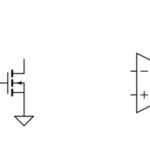Understanding How To Compare Lumens is crucial when choosing the right light bulb. For years, we relied on wattage to indicate brightness, but with the advent of energy-efficient lighting like LEDs, lumens have become the key metric for measuring light output. This guide will explain how to use lumens to compare different light bulbs and make informed purchasing decisions.
This chart provides a quick visual comparison between watts and lumens for different bulb types.
Why Lumens Matter More Than Watts
Traditionally, wattage was used as a proxy for brightness. Higher wattage generally meant a brighter bulb. However, wattage actually measures power consumption, not light output. With energy-efficient bulbs like LEDs, a lower wattage can produce the same or even more light than a higher wattage incandescent bulb. This is where lumens come in.
Lumens (lm) measure the total amount of visible light emitted by a light source. This makes lumens a more accurate measure of a bulb’s brightness. The higher the lumen rating, the brighter the bulb. Knowing how to compare lumens allows you to choose bulbs with the desired brightness regardless of their wattage or technology.
Comparing Lumens Across Different Bulb Types
Comparing lumens is essential when choosing between different bulb types like LEDs, CFLs, and halogens. Each technology has varying levels of energy efficiency, meaning they produce different amounts of light (lumens) for the same amount of power (watts) consumed.
For example, a 9W LED bulb can produce the same amount of light (lumens) as a 60W incandescent bulb. By looking at the lumen rating on the packaging, you can directly compare the brightness of different bulbs and choose the one that meets your needs while minimizing energy consumption.
Lumens to Watts Conversion: A Quick Guide
While lumens are the best indicator of brightness, you can use the following approximations to understand how LED lumens compare to traditional incandescent wattage:
- 40W Incandescent ≈ 450 Lumens
- 60W Incandescent ≈ 800 Lumens
- 75W Incandescent ≈ 1100 Lumens
- 100W Incandescent ≈ 1600 Lumens
- 150W Incandescent ≈ 2600 Lumens
This chart offers a handy reference for comparing lumens and watts. Remember these are approximations, and actual lumen output can vary slightly between bulb manufacturers.
This image showcases various certifications related to lighting standards and measurements, underscoring the importance of reliable metrics like lumens.
Making Informed Decisions with Lumens
Understanding how to compare lumens empowers you to choose the right bulb for your needs. By focusing on lumens instead of watts, you can:
- Achieve desired brightness: Select bulbs that provide the appropriate amount of light for specific tasks or rooms.
- Save energy: Opt for energy-efficient bulbs with high lumen output and low wattage.
- Reduce costs: Lower energy consumption translates to lower electricity bills.
By considering lumens when purchasing light bulbs, you can optimize lighting for both functionality and efficiency. Remember to check the packaging for the lumen rating and use the provided conversion chart as a helpful guide.
